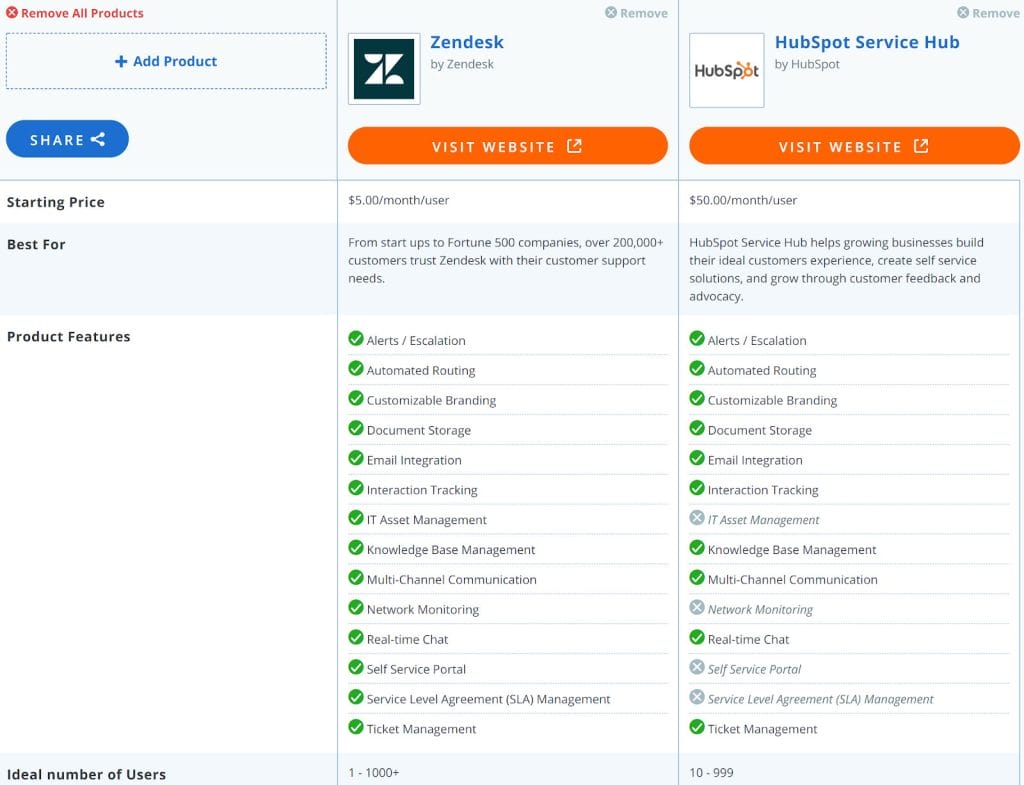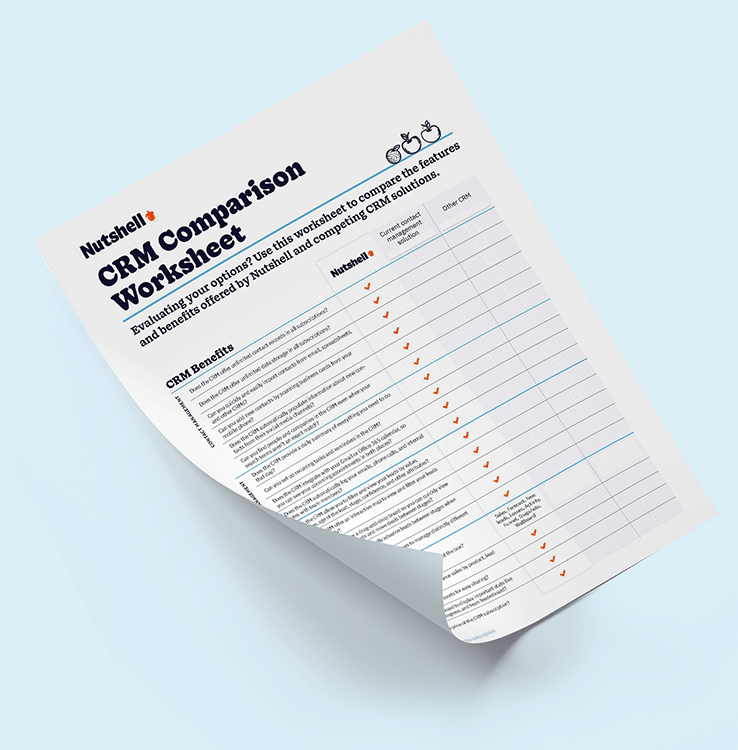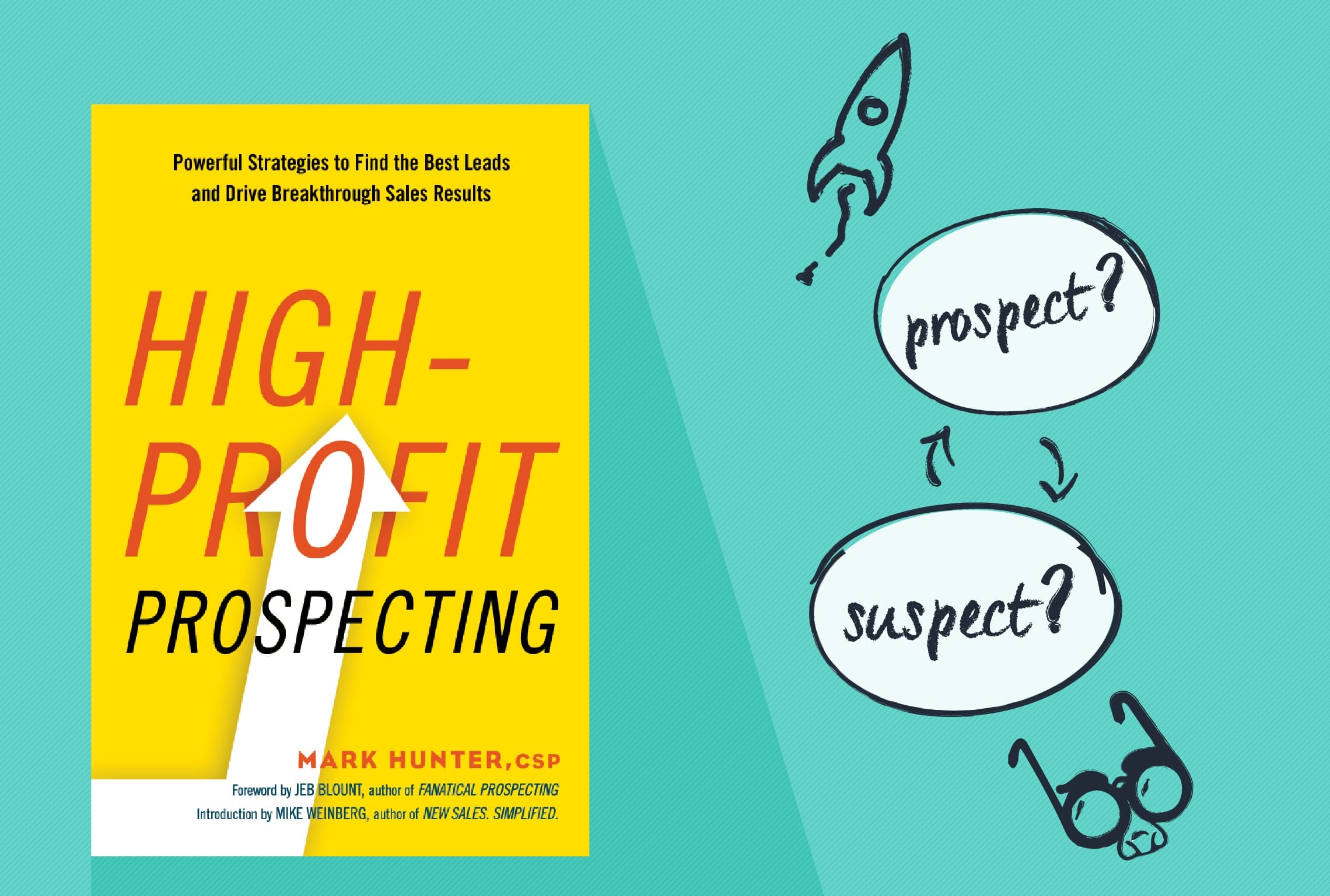
Whether you manage a sales, marketing, or customer support team, chances are you’ve considered exploring HubSpot’s various tools. If so, you may have wondered what HubSpot costs and how its pricing compares to similar tools.
First, you should know that HubSpot charges way more than its competitors—sometimes ten times as much—even though it often gets trounced in head-to-head comparisons.
How can it afford to do this? No, the answer has nothing to do with “audacity.”
HubSpot has been around since 2006 and is a front-runner in the marketing space. If you’ve ever Googled any sales or marketing tips, you’ve more than likely seen its content.
In 2024, HubSpot employs 7,663 staff members and earns $2.17 billion in annual revenue, with Salesforce as its closest rival.
The platform is essentially a collection of expensive tools that serve as a platform powerful enough to handle all of an organization’s marketing needs. They say that with great power comes great price tags, and HubSpot is no exception.
“We just paid HubSpot a total of $21,600 for a year of service, at $1,800 per month. For our 20,000 contacts, it is $600 per month alone. Then, we pay an additional $800/month for Marketing Hub and $400 for Sales Hub. We have 5 users.”
Sales Manager, SaaS Startup
This post examines and breaks down what HubSpot CRM costs and why it’s so much more expensive than other platforms that offer the same features.
We also ran the math on HubSpot’s deceptive pricing structure and here’s what our math came out to on how much HubSpot really costs.

💬 ChatGPT
🔍 Perplexity
🤖 Claude
🔮 Google AI Mode
🐦 Grok
HubSpot is a solid product that serves many (large) companies very well. It is versatile, powerful, and very customizable. It is a good solution for companies who can afford it.
The problem is that small-to-medium companies pay an arm and a leg for HubSpot when they should be using a handful of similar, more affordable tools.
HubSpot can cost you around ten times as much as other similar sales, marketing, and service tools per month. To better understand the cost of HubSpot CRM, think of it as four separate tools, all integrated with one another. These four tools include:
Its viability as a marketing platform isn’t drawn from the power of any of its individual tools but rather from the fact that they all communicate with each other inherently.
At its core, HubSpot is a very basic, free CRM platform. Technically speaking, this is an SQL database of contacts wrapped in a user interface. Untechnically speaking, it’s an enhanced Excel file.
A CRM is a ubiquitous piece of software and, according to DemandSage, 91% of companies with over 11 employees use one. CRMs are vital to an organization’s success because they provide companies with the ability to digitally manage their sales pipelines, prospects, customers, and more.
HubSpot’s CRM is just that. Information about contacts can be manually added to the platform. Prospects can also be automatically added to the CRM from a vast array of triggers ranging from contact forms to landing pages to scanned business cards.
The CRM by itself doesn’t do much else. It’s basically just the data that supports the rest of the platform.
Nutshell does all this and more.

HubSpot’s Sales Hub is the first of its three spokes. The Sales Hub is an overlay of features that sits atop the core CRM, and provides the necessary functions to allow salespeople to make use of their data.
Sales Hub provides users with the tools they need to manage their sales operations from start to finish with basic custom pipelines, task automation, and variable data recording fields.
Users can automate emails as sequences, meaning the recipient will get a series of personalized emails unless a specific action is taken, like a reply. This is how most of those “Just sending you another email in case you missed my last one” messages end up in your inbox.
Sales Hub also allows its users to schedule emails to be sent at specific times, making it possible to crank out a day’s worth of emails in a short amount of time.
Unfortunately, these features are only included from the Professional plan upward, which starts at $90/month/per seat. However, there are many more affordable CRMs that offer the same features.
Nutshell does the same and is far more cost-effective.

As you may have guessed, the Marketing Hub is another suite of features that you can run on that initial CRM core. Geared toward marketers, the Marketing Hub provides HubSpot users with lots of insight into how their data is managed.
The feature list is full of random limitations that seem to serve no purpose other than as money traps. Their base plan allows for 2,000 email sends per month with HubSpot branding. For $20/month, users can send 5x that, and for $890/mo, they can send 10x that, both without HubSpot branding.
Why does the $3,600/month (not a typo) version support up to 200 currencies when there are only 180 recognized currencies worldwide? Do they love establishing limits that much?

HubSpot’s Marketing Hub also features advertisement management, which is actually pretty useful for marketers who manage their ads in-house.
This allows users to advertise through third-party ad networks to specific audiences. Then, the ad data, including clicks and conversions, is sent back to HubSpot so prospects can receive custom ads and messaging depending on their behavior.
One of the biggest reasons companies choose Marketing Hub is because of its landing page creator. Marketers use this tool to create special web pages that track traffic and compare it against the CRM data.
Landing pages usually feature forms or other ways to capture data in exchange for exclusive content or deals. With automation, a prospect’s behavior on a landing page can automatically bump them into another workflow or pipeline, depending on their specific action.
Other cool features in Marketing Hub include blogging, social media management, and even built-in SEO recommendations and warnings that report opportunities and errors across your website.
“HubSpot’s landing page builder isn’t as easy as comparable drag-and-drop web tools, like Nutshell’s Landing pages tool. Anything outside of creating identical, modular pages, will require HTML knowledge. I’m HTML and CSS certified and I still didn’t find it easy.”
Nutshell users can add its Landing pages tool to their CRM for just $37/month. And Nutshell’s email marketing add-on offers a host of marketing tools connected directly to your CRM, starting at just $5/month.
Service Hub is a ticket-based customer service and account management suite that allows organizations to delight their customers with a slew of features.
Compared to customer service leaders Zendesk, HubSpot offers fewer features for $130/mo/seat than Zendesk at $115/month/agent at their most expensive tiers.

Service Hub has cool features like a knowledge base, video creation, and document support, and it also borrows select features from the sales and marketing suites like email sequences and user roles.
You might be wondering why people would pay such a hefty price for a tool that obviously isn’t as good as the competitor. Good question: 👇
“I pay (HubSpot) $900 per month because I need a handful of features in both the sales and marketing suites. It’s $400 for sales, $512 for marketing, and we still have a maximum of 1,000 contacts.”
Office Manager, IT Talent Agency
HubSpot is expensive for a few significant reasons.
Think back to 2006, when ads were barely targeted, and Salesforce was the only prominent CRM around. HubSpot provided a much-needed alternative. They also understood the importance of using customer data long before most other companies—a practice that is now ubiquitous. Back in 2006, this was mind-bogglingly cool.
Being around for so long has also given HubSpot tons of clout in the marketing world. They’re not quite a verb yet, like Google, but they’re close.
This is particularly unfortunate for small-to-medium-sized companies whose IT leaders lack the sales and marketing knowledge required to circumvent HubSpot. If the company decides they want their website to speak to their CRM and no one knows how to set that up, HubSpot makes a killing.
As this HubSpot advertisement in disguise states, HubSpot targets organizations of up to 2,000 employees. “Just because you do marketing doesn’t mean HubSpot is the right fit.”
Is there a way to get the functionality of HubSpot’s Sales and Marketing Hubs without paying hundreds, if not thousands, per month?
Yes. In fact, Nutshell offers sales and marketing teams an all-in-one solution with a robust CRM system, cutting-edge sales and pipeline management software, and advanced marketing tools.
Besides the fact that Nutshell costs considerably less, it also offers all the same core functionality and even paves its own way on certain features, like lead maps.
Because of this, Nutshell often outranks HubSpot when compared side-by-side, despite HubSpot’s omnipresence in the sales and marketing world. Committed to helping sales pros do more selling and less tinkering, Nutshell outperforms HubSpot on what matters, including:
Both being CRMs, most features of Nutshell and HubSpot overlap at face value. A few exceptions that stand out on HubSpot’s side include:
Annual license cost for a 10-person team
Pricing gathered from Hubpost.com and Salesforce.com
Email Sequences & Campaigns
Implementation costs
Source: BacancyTechnology.com
Full-time admin salary
Source: Talent.com
Live phone and chat support
Source: Salesforce.com
Fully functional mobile app
Source: G2.com
Data storage
One-click dialing and call recording
Year 1 Total
Let’s assume the average of the optional fees and one level of overage for 6 months of the year.
Year 2 and Beyond Totals
This assumes you don’t grow as a company and add more records…

$18,000
($150/user/month)
$34,680/year
(For up to 50,000 contacts level)
$10,000
(“one price fits all”)
$6,000 to
$38,400/year
(available, but not required)
$0
$0
$1,100/month
for going over 1 million total records
$50/month for 1,000 minutes
(3,000 minute limit)
$91,580
$78,580

$9,480
($79/user/month)
$4,680/year
(For up to 50,000 contacts level)
$0-$1,500
(available but not required)
$0 to
$18,000/year
(available to customers, but in no way required)
$0
$0
$0
unlimited storage at no extra cost
$0
On Pro plans and above
$23,910
$23,160

$19,800
($165/user/month)
$19,800/year
(For up to 50,000 contacts level)
$75,000 – $200,000
(has many factors)
$96,687/year
(if you’re lucky)
$5,940/year
(30% of software license)
$3,000
($25/user/month of software license)
$1,500/year
for every 500MB after the first 10GB ($125/month)
$3,600+/year
($30/month/user and an additional $15/month for every 1,000 minutes logged)
$284,452
$146,952
See how HubSpot pulls a bait and switch with their pricing model. Check out the real price of HubSpot.
The head-to-head comparisons are as straightforward as it gets. Sales Hub’s features are often lacking compared to newer, purpose-built CRMs like Nutshell.
Sales Hub is priced at ten or more times its competition solely because of its native integrations with the rest of the HubSpot platform. Users pay for the ability to have their data seamlessly flow from tool to tool, allowing them to do much more sales and marketing automation.
Nutshell offers integrations with tools that do all the same stuff as HubSpot, except for way cheaper. Since these tools are usually built by smaller companies with more targeted focuses, their quality tends to whoop their atrociously expensive HubSpot counterparts in head-to-head comparisons.
HubSpot’s Marketing Hub has loads of features, which is partially why it costs $890/month for 2,000 contacts and $3,600 for 10,000 contacts.

Assuming you’re already using a CRM, an integration with an email marketing service can replace 90% of the functionality of Marketing Hub. But what if that marketing service was built into your CRM?
Email marketing provides a complete email marketing automation suite, including templated designs, engagement reporting, and the ability to send newsletters, announcements, and drip sequences for a fraction of the cost. It’s purpose-built to help marketers drive revenue, and pricing starts at just $5/month.
Landing pages are critical to a marketing team’s success because they add contacts to the CRM or provide data that directly helps marketers engage with their audiences.
For instance, if a prospect downloads all of your articles on the topic of sending cold emails, that’s data that can be used to keep them engaged in the future.
Nutshell’s Landing pages tool will only cost you $37/month. It mitigates the need to integrate a separate tool for this function, offering plenty of high-quality template designs to get you started.
Host your landing pages on your website’s domain or a Nutshell-assigned domain— it’s up to you. Use Nutshell’s Web Form Builder to automatically add a form to your landing page, capture leads, and upload them to your CRM database and pipelines.
Nutshell has what you’re looking for.

HubSpot’s Service Hub feels like an afterthought when compared straightforwardly to Zendesk and Freshdesk. On lists of best helpdesk software, it typically places close to 50th on the list, meaning there are plenty of better (cheaper) options out there.
It makes sense for HubSpot to add a Service Hub to its suite, considering its CRM and integrations are designed to provide maximum functionality for its users’ data. They would not be fulfilling their purpose if they didn’t offer their own helpdesk solution.
Unfortunately for HubSpot, Service Hub is no one’s first (or tenth) choice.If you assumed that Service Hub is wickedly expensive despite its shortcomings, you guessed right. Service Hub’s middle-of-the-ground solution goes for $100/month/user. In comparison, seasoned industry leader Zendesk goes for $89/month/user.
HubSpot’s solutions are often rated worse than those of its competitors. Despite this, HubSpot charges five and ten times as much per tool since users need their solutions to integrate with one another across teams.
For larger companies, this price tag is acceptable. It’s worth it for them to pay through the nose if it means using the same support representatives, hiring only one HubSpot developer, and paying one monthly bill instead of several.
For small to medium businesses that can’t justify spending a few thousand dollars a month, there are ways around this that still offer the majority of the same functions, covering all of HubSpot’s popular features.
DOWNLOAD
Download our CRM Comparison Worksheet to learn how to decide which CRM is right for your business.

Small to medium-sized businesses avoid HubSpot but still get most of its popular features by combining applications with integrations.
Nutshell comprises a broad spectrum of sales and marketing features. These let users create custom pipelines, manage contacts, send automated and personalized emails, and much more without breaking the bank.
That’s why Nutshell is a leading all-in-one CRM and email marketing platform with a maximum price of $67/month/user and integrates with all your favorite apps. Plus, you can transfer your HubSpot data automatically into Nutshell in just a few clicks, no setup required.
With Email marketing, users can send beautifully designed email newsletters, announcements, and automated drip sequences without relying on a cumbersome product.
Instead of using Service Hub, you can easily integrate Zendesk with Nutshell for a complete sales, marketing, and customer support solution. This way, you can prioritize support issues, keep customers happy, collaborate, and build relationships behind the scenes.
Integrate any other tools with Nutshell using Zapier—It’s like duct tape that holds two pieces of software together and can be used to tack on any tools your company needs, even if the tool doesn’t integrate with the rest of your suite.
Zapier connects 2,000+ applications to one another and costs $49/month for its middle-of-the-ground solution.
There are tons of different tools that blow HubSpot out of the water. When shopping for alternatives, be sure to check on the native integrations and make sure they communicate with the rest of your software stack. There’s no need to pay ten times as much just because the HubSpot tools all integrate with one another.
Let’s face it: HubSpot no longer has a monopoly on integrations. It’s time for them to stop pricing like they do.
Photo by Jp Valery on Unsplash
Give our powerful, easy-to-use CRM a try for free for 14 days! Or join a live demo to see Nutshell at work!




Join 30,000+ other sales and marketing professionals. Subscribe to our Sell to Win newsletter!
 Email & Calendar Sync
Email & Calendar Sync
Use our calculator to add up your total investment of CRM and Add-ons
VIEW ALL PRICING
 Product Info
Product Info Education & Guides
Education & Guides Company
Company